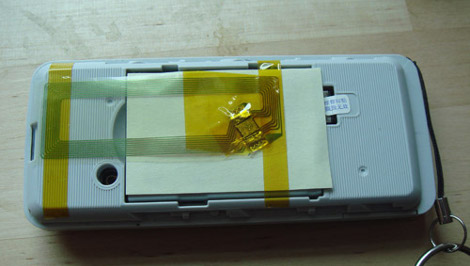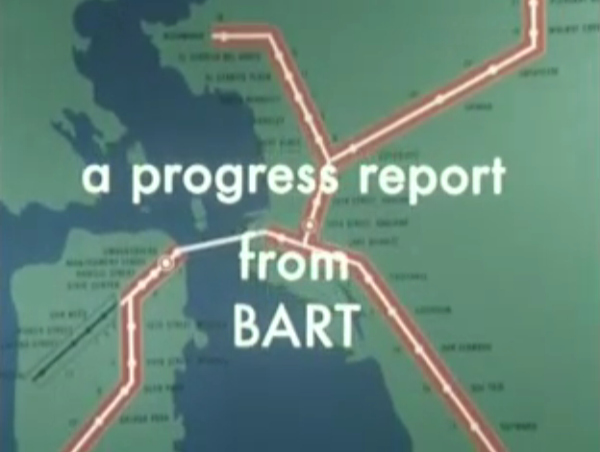Sometimes it’s fun to take a step back from the normal electronics themes and feature a marvelous engineering project. This week’s Retrotechtacular looks at a pair of videos reporting on the progress of the Bay Area Rapid Transit system. Anyone who’s visited San Francisco will be familiar with the BART system of trains that serve the region. Let’s take a look at what went into building the system almost half a century ago.
subway21 Articles
Barometer Tells You To Take Your Bike Or The Train

Before beginning his day, [Richard] needs to decide whether he should ride his bike to work or take the London tube. All the information to make that decision is available on the Internet – the current weather report, and the status of the subway lines and stations he’d be taking. The problem, though, is all these pieces of information are spread out in multiple places. [Richard]’s solution to this was to make a bicycle barometer that pulls data from these places and makes the decision to ride a bike or the tube for him.
[Richard]’s barometer is built around a nanode and an old clock he found at a flea market. The nanode queries the UK’s weather bureau and the London underground’s line and station status. All the variables under consideration are weighted; if it’s snowing, the output is much more likely to decide on the tube than if there was a slight drizzle.
It’s a really cool build that certainly makes a great use of the publicly accessible APIs made available by the London underground. You can check out a video of the barometer after the break.
Continue reading “Barometer Tells You To Take Your Bike Or The Train”
Radio Built From The London Underground Map

We love it when PCB artwork is actually artwork. Here’s one example of a radio whose layout mimics the map of London’s subway system.
The build is for an exhibit at the London Design Museum. They have an artist in residence program which allowed Yuri Suzuki time and resources to undertake the project. He speaks briefly about the concepts behind it in the video after the break.
The top layer of copper, and silk screen was positioned to mirror the subway lines and stops on a traditional transportation map. Major components represent various transfer hubs. In this way he hopes the functioning of the circuit can be followed by a layman in the same way one would plan a trip across town.
This may be a bit more abstract than you’re willing to go with your own projects. But there are certainly other options to spicing you track layout.
Continue reading “Radio Built From The London Underground Map”
Your Mobile Phone, Now With 100% More RFID

More and more today, it is becoming harder to avoid having some sort of RFID tag in your wallet. [bunnie], of bunnie:studios decided to ease the clutter (and wireless interference) in his wallet by transplanting the RFID chip from one of his subway cards into his mobile phone. Rather than the tedious and possibly impossible task of yanking out the whole antenna, he instead pulled the antenna of a much more accessible wristband with an RFID chip of similar frequency instead. Nothing too technical in this hack, just a great idea and some steady handiwork. We recommend you try this out on a card you haven’t filled yet, just in case.
The Subway Never Sounded So Good
[youtube=http://www.youtube.com/watch?v=ivg56TX9kWI]
Reader [Philippe] tipped us off about this video showing a set of subway steps being turned into a piano keyboard (english translation). The creators wanted to make taking the stairs rather than riding the escalator a bit more fun. They added pressure sensors to each step, then covered them with white and black keys to resemble a keyboard. When a passenger puts their weight on a step, the corresponding pitch is played out loud.
We may have lied in the title as this doesn’t really compare to hearing Josh Bell play for pocket change at your train stop. But coming across this setup on an otherwise mundane commute would really brighten up our day.
MBTA Drops Lawsuit Against MIT Subway Hackers

The Massachusetts Bay Transit Authority (MBTA) has dropped its federal case against three MIT researchers, “the subway hackers”. This happened in October and now the EFF brings news that the students will be working with the MBTA to improve their system. The overall goal is to raise security while keeping expenses minimal.
This whole mess started in August when a gag order was issued against the students’ presentation at Defcon. It’s a shame no one ever saw it because it covers a lot of interesting ground. A PDF of the banned slides is still online. They performed several attacks against both the subway’s fare system and physical security. Our favorites by far were using GNU Radio to sniff the RFID card’s transaction and bruteforcing Mifare Classic with an FPGA.
Subway Hacker Speaks

Popular Mechanics has an interview with [Zach Anderson], one of the MIT hackers that was temporarily gagged by the MBTA. The interview is essentially a timeline of the events that led up to the Defcon talk cancellation. [Zach] pointed out a great article by The Tech that covers the vulnerabilities. The mag stripe cards can be easily cloned. The students we’re also able to increase the value of the card by brute forcing the checksum. There are only 64 possible checksum values, so they made a card for each one. It’s not graceful, but it works. The card values aren’t encrypted and there isn’t an auditing system to check what values should be on the card either. The RFID cards use Mifare classic, which we know is broken. It was NXP, Mifare’s manufacturer, that tipped off the MBTA on the actual presentation.











